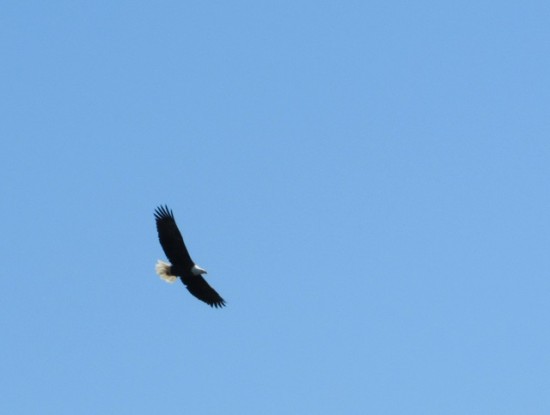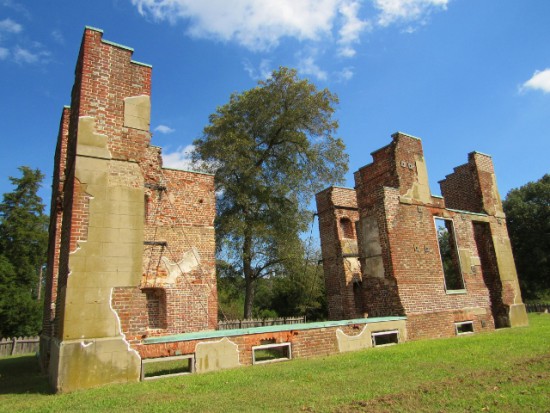Day 11: Wednesday, October 14, 2015
The last destination of our Virginia trip was Chincoteague Island. I had grown up reading the Misty of Chincoteague stories, had my collection of Breyer horse Misty and her foals, and wanted to see where the real life Misty had come from.
If you aren’t familiar with Misty, she was a real live Chincoteague pony who has purchased by children’s author Marguerite Henry. Misty and her family were the subject of several of Henry’s books, detailing her fictional life on Chincoteague Island with a young boy and girl and their family in the 1940s. For this girl who grew up horse-crazy, to see the island where Misty came it was the stuff of dreams come true. And now, we were there and I was going to see ponies!
The ponies live on Assateague Island, which is one of the barrier islands off mainland Virginia. It is uninhabited, with the people living on nearby Chincoteague Island. There are a couple different explanations about how the ponies got there, but each story has some supporting evidence and which one is true is unknown.
- The inhabitants of Chincoteague Island and the mainland placed their horses out on Assateague Island in order to get out of paying taxes on them. Over the years, some went wild, or were forgotten, and there they remain.
- In the 17th century, a Spanish galleon wrecked off the coast of Virginia, and some of its cargo of horses were able to swim to Assateague Island, where they remain.
The Chincoteague ponies are actually horses, but a couple hundred years of living on a salt marsh island, subsisting on poor quality forage, as well as years of inbreeding has created animals with a smaller stature and more pony-like characteristics. The pot bellies that are evident on many of the ponies are also a trait that has developed due to their poor quality diet.
There are two herds of ponies, separated by a fence that divides the Virginia side of Assateague Island from the Maryland side. The Virginia side is Chincoteague National Wildlife Refuge, and although they allow the ponies to live there, the refuge management has enforced a limit on their numbers.
Every year in July, there is an pony penning on the Virginia side of the island, where the ponies are technically “owned” by the Chincoteague Island Volunteer Fire Department. The ponies are swum across the short distance between the islands (it is a really short distance, and very small foals are given a lift), given veterinary care, and some of the foals are auctioned off, both to earn money for the Fire Department and to control the population. The official annual event began in 1924, and features the usual festival accoutrements, lots of food, a carnival, and fireworks.
On the Maryland side of Assateague Island, the second herd of ponies are considered wildlife by the National Park Service. Other than contraceptive darts, these ponies are given no medical care, and live their lives as truly wild animals. Aside from all the tourists that undoubtedly feed them tons of junk food – you can get a fine for it, but that never seems to stop dumb people.
And now I was finally there, and even though it wasn’t during the annual festival, I was going to get to see the ponies. I booked a tour on a “pony boat,” my term for the small boat that was scheduled to take us around the island to see the ponies from the water. And in the afternoon, we were going to visit the Wildlife Refuge on Assateague Island to see them from a different view.
That morning I woke up early and took a stroll around Chincoteague Island to see what there was to see. It was pretty quiet on a Thursday in October. It was nice to see the pink light of the sunrise reflecting off the water, even if the sunrise itself was blocked by houses.
We met Captain Dan at the dock to commence our “pony boat” excursion. There were two other couples on the boat with us, so it certainly wasn’t crowded at all. And off we went. Captain Dan grew up on the island, and shared lots of interesting information about the history of the island, the patterns of erosion of the sandbars, the nearby military facilities, and the wildlife. And of course, the ponies.
Captain Dan had a book with photos of all the ponies that live on the island, complete with their birth dates and parentage (if known). He knew which stallions had bands consisting of which mares, and where each group liked to hang out. He told stories of various ponies and their lives.
While I wouldn’t say it was a banner day for pony spotting, we saw about 8-10 ponies over the course of our three hours on the boat. We had plenty of time to observe the ones that we saw. We also got great views of the lighthouse on the island, two bald eagles, and a tri-colored heron! The weather and the scenery were fantastic and it was wonderful to be able to relax for a couple of hours out on the water.
If you are visiting, I would highly recommend Captain Dan’s tour – I loved it! We finished off our morning tour with lunch at the Jackspot restaurant again; I couldn’t get enough of those oysters that we had the day before. And at $1 per oyster, who could go wrong!





































